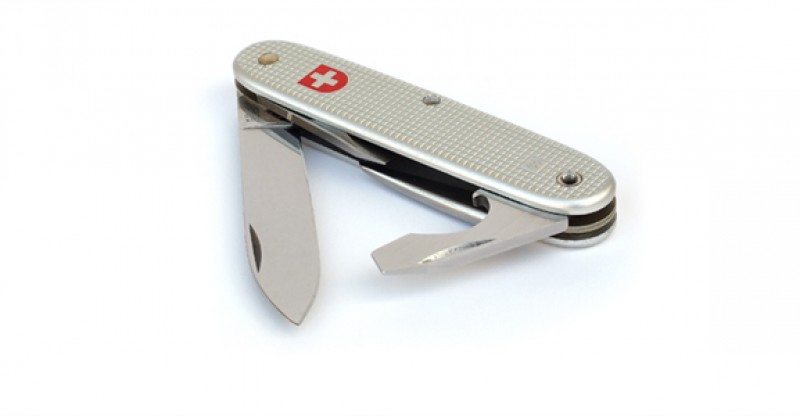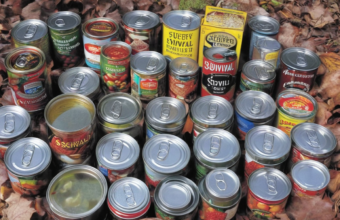How to Survive a Knife Attack – Your Ultimate Survival Guide
In a world where unexpected dangers lurk around every corner, learning how to protect oneself is paramount. One such peril, unfortunately more common than we’d like, is a knife attack.
This guide aims to equip you with the knowledge and skills to survive such a situation. It’s not just about physical agility but also mental preparedness, understanding the attacker’s psychology, and making split-second decisions that could mean the difference between life and death.
Dive in, as we explore the vital steps and strategies to effectively handle a knife attack, ensuring your safety and survival. Remember, knowledge is your best defense. Let’s get started.
What is a knife attack?
Put some distance between you and your attacker with this-Click here!
A knife attack is a violent incident where an individual uses a knife to harm or threaten another person. It can occur in various settings, including domestic disputes, street altercations, or even unprovoked assaults. The attacker typically uses the knife as a weapon to intimidate, injure, or even attempt to kill the targeted individual.
Understanding the nature of a knife attack is crucial in developing effective strategies to survive such an encounter. It’s important to note that the attacker usually has the element of surprise, which can significantly affect the outcome of the situation.
In a knife attack, the assailant aims to use the knife’s sharp edge or point to inflict damage. The severity of the injuries can range from minor cuts to life-threatening wounds, depending on the location and depth of the inflicted harm.
- Escape is the best strategy whenever possible, as engaging with an armed attacker significantly increases the risk of severe injury or death.
The unpredictability and rapid nature of knife attacks make them particularly dangerous. Therefore, gaining knowledge about preventative measures, defensive techniques, and first aid responses can be instrumental in surviving a knife attack.
How can I avoid a knife attack?
The first step in avoiding a knife attack is to maintain awareness of your surroundings. Knowing who is around you and what they are doing can provide valuable seconds to respond to a potential threat. If you see someone with a knife, try to put distance between you and them.
It is also important to avoid confrontation whenever possible. If you find yourself in a tense situation, try to deescalate and exit the situation calmly. If escape is not an option, use whatever you have at hand to protect yourself.
A crucial aspect of survival is self-defense training. Learning basic self-defense techniques can boost your confidence and give you the tools to protect yourself.
- Be aware of your surroundings
- Avoid confrontation
- Put distance between you and the potential attacker
- Use objects at hand for protection
- Seek self-defense training
Remember, the goal is not to win a fight, but to survive and escape. It’s also worth noting that in the event of a knife attack, it’s crucial to call the authorities as soon as you’re safe. Understanding these principles can help you avoid and survive a knife attack.
What should I do during a knife attack?
In the unfortunate event of a knife attack, your immediate priority should be to create distance between you and the attacker. If possible, run to a safe location and call for help. If escape is not an option, try to find a barrier, like a chair or a table, to put between you and the attacker.
In a knife attack scenario, it is crucial to protect your vital organs. Keep your arms up to shield your chest and face, and turn your body sideways to minimize the target area.
One of the most effective defense techniques is to use a makeshift shield or weapon. Grab anything nearby – a bag, a book, even a trash can lid – to deflect the knife blows.
Remaining calm is of utmost importance. Panic can lead to poor decision-making, which can worsen your situation. Focus on your breathing and try to maintain a clear head to assess your options.
If physical confrontation is unavoidable, aim for the attacker’s vulnerable areas, such as the eyes, throat, or groin. However, remember that your primary objective is not to win the fight, but to survive and escape.
Lastly, remember that every situation is unique. The aforementioned guidelines are general and may not apply to every scenario. Always prioritize your safety and trust your instincts.
Can self-defense classes help against knife attacks?
Self-defense classes are indeed a crucial tool in preparing for potential knife attacks. They equip individuals with essential skills and techniques to defend themselves in dangerous situations. The role of self-defense training is to instill confidence and improve physical conditioning, thereby increasing chances of survival during a knife attack.
One of the key benefits of self-defense classes is the focus on awareness and prevention. Trainees learn to recognize potential threats and avoid dangerous situations. In a knife attack scenario, the first line of defense is always avoidance and escape, which is heavily emphasized in self-defense training.
Moreover, self-defense classes teach practical techniques to disarm an attacker. These techniques can be lifesaving during a knife attack, as they enable the victim to gain control of the situation. However, it’s important to note that these techniques should only be used as a last resort when escape is not possible.
In addition, self-defense classes also train individuals to react quickly and effectively under high-stress situations. This is particularly useful in a knife attack where every second counts.
Through realistic scenario training, self-defense classes can, therefore, provide the necessary skills to survive a knife attack. However, it’s crucial to remember that the goal is always to escape and seek help, not to engage the attacker.
What are common injuries from knife attacks?
Knife attacks often result in a range of injuries, with the severity varying based on the location and depth of the wound. Puncture wounds are common, caused by the knife penetrating the skin and underlying tissues. These injuries can lead to internal damage, particularly if vital organs are involved.
Another common injury is a laceration, a deep cut or tear in the skin. Lacerations can be superficial, affecting only the skin, or deep, reaching muscles, tendons, or even bones. These wounds often require stitches and carry the risk of infection.
Incised wounds, caused by a slicing motion, are also frequent in knife attacks. They may appear minor at first glance, but can cause significant blood loss and damage to underlying structures.
In severe cases, knife attacks can result in amputations or disfigurement. These injuries have lasting physical and psychological impacts, making the recovery process challenging.
Knife attacks can also lead to psychological trauma. Survivors may experience post-traumatic stress disorder (PTSD), anxiety, and depression. These mental health conditions can persist long after physical wounds have healed, affecting the survivor’s daily life and overall well-being.
In all cases, immediate medical attention is crucial. Proper wound care can prevent complications such as infection, and mental health support can aid in the recovery process.
How to treat wounds from a knife attack?
Immediate action is crucial when dealing with wounds from a knife attack. Your first step should be to ensure your safety and call emergency services. As you wait for medical professionals to arrive, apply direct pressure to the wound with a clean cloth to control bleeding.
If possible, try to elevate the wound above the level of the victim’s heart. This can help slow down the flow of blood. Do not attempt to remove any object that may be impaled in the victim, as this can cause more damage.
First aid can be administered if you have the necessary supplies. Clean the wound with warm water and mild soap, then apply an antibiotic ointment and a clean bandage. If the wound is deep, stitches may be required, and a tetanus shot may be necessary to prevent infection.
- Ensure safety and call for help
- Apply direct pressure to the wound
- Elevate the wound
- Administer first aid if possible
It’s important to remember that these steps are temporary measures. Professional medical attention is necessary to properly assess and treat wounds from a knife attack. Regularly monitor the wound for signs of infection, like increased redness, swelling, or pus. If any of these symptoms are noticed, seek immediate medical help.
Remember, the aim is to survive a knife attack, and proper wound care is a critical part of that survival process.
Can a knife attack be fatal?
Certainly, a knife attack can indeed be fatal, depending on the location and depth of the wound. Vital organs, arteries, and veins, when pierced, can lead to rapid blood loss, organ failure, or infection, all of which are life-threatening conditions. The human body is particularly vulnerable in certain areas such as the chest, neck, and abdomen.
In a knife attack, it is crucial to defend oneself effectively. Strategies include creating distance, using objects as a shield, and targeting the attacker’s vulnerable points. Here are some key points to remember:
1. Stay calm and assess the situation.
2. Try to create distance between you and the attacker.
3. Use any available objects as a shield.
4. If possible, aim for the attacker’s vulnerable points like eyes or throat.
Remember, these strategies are not foolproof and the best course of action is always to avoid confrontations whenever possible. Surviving a knife attack is more about prevention and awareness than combat. Stay alert to your surroundings, avoid dangerous areas, and always prioritize escape over engagement.
It’s also recommended to take self-defense classes that specifically teach how to handle such situations. These classes often cover important aspects like emergency first aid and psychological preparation, both of which can make a significant difference in the outcome of a knife attack.
What are the legal repercussions of a knife attack?
Understanding the legal repercussions of a knife attack is crucial. The perpetrator, upon conviction, faces serious penalties, including incarceration, fines, and probation. In most jurisdictions, a knife attack is classified as aggravated assault, a felony that carries heavy penalties.
The specific legal consequences vary depending on factors such as the severity of the victim’s injuries, the intent of the attacker, and the local laws. If the victim sustains severe injuries, the perpetrator could be charged with attempted murder.
In some cases, if the attacker had the intention to cause harm without necessarily wanting to kill, they might face charges of assault with a deadly weapon. This charge can still result in significant prison time, especially if the attack is considered premeditated.
Legal repercussions also extend to the victim. If you’re a victim and you manage to disarm the attacker, it’s essential not to retaliate. Courts may view retaliation as an act of aggression, potentially leading to legal consequences for the victim.
Remember, surviving a knife attack isn’t just about physical survival, but also navigating the potential legal aftermath. Always cooperate with law enforcement, provide accurate information, and consult with a legal professional to protect your rights and interests.
Self-defense is a common plea in knife attack cases. However, the court will determine whether the use of force was reasonable in the given situation. The court’s decision will depend on various factors like the threat level, the victim’s response, and whether there was an opportunity to escape the situation.
Conclusion: Surviving a Knife Attack
The survival of a knife attack is a complex issue, involving both preemptive and responsive strategies. It is crucial to understand the nature of a knife attack, how to avoid it, and what to do when confronted with such a dangerous situation.
Self-defense classes can be an effective tool in preparing oneself against potential knife attacks, providing practical skills and boosting confidence in high-risk situations. However, it’s important to remember that even with training, knife attacks can result in serious injuries. Knowing how to treat wounds from a knife attack can be a lifesaver, but the best strategy is always to avoid such confrontations.
A knife attack can indeed be fatal, emphasizing the importance of this subject. The legal repercussions of a knife attack can be severe, further underlining the need for public awareness and education on this issue.
In the future, we may see developments in self-defense technology and legislation that could impact the dynamics of knife attacks. However, the core principles of awareness, avoidance, and effective response will always remain relevant.
Remember, the information provided here is not just for personal safety, but also to empower you to help others and contribute to a safer community.












